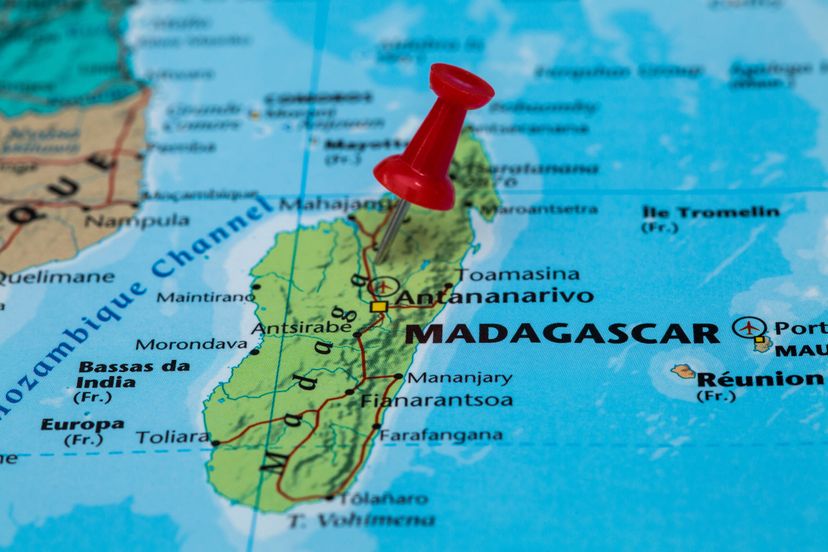
Located off the southeast coast of Africa, Madagascar is the fourth largest island in the world, yet there’s still so much unknown about the mysterious location. It has been the inspiration for many documentaries and films over the years and is arguably one of the most unique and interesting locations on Earth. If you’re curious about Madagascar, follow along as we round up some of the most interesting facts about the island, its people, and its culture.
Advertisement
1. Most of Madagascar’s wildlife is found nowhere else on Earth

Madagascar has been an isolated island for around 70 million years. It broke away first from Africa around 165 million years ago and then from India nearly 100 million years later. This isolation led to the development of unique flora and fauna species, with 90 percent of its wildlife found only in Madagascar. Among its extinct mammals were giant flightless birds and dwarf hippos.
2. Madagascar was settled by Asians before mainland Africans

The first humans to settle in Madagascar came from the island of Borneo, which is now divided between the countries of Brunei, Indonesia, and Malaysia. They arrived between 350 BCE and 550 CE in canoes and weren’t joined by mainland Africans until almost 500 years later. Over time, other African, Asian and European settler groups arrived, each bringing their own diverse contributions to the culture and population of the island.
3. Lemurs are sacred in Madagascar

Across Madagascar, lemurs are often revered, protected, and seen as sacred by its population. Many origin myths make some connection between lemurs and humans, usually through common ancestry. As of 2012, there were 103 living species and subspecies of lemur, almost all classified as rare, vulnerable, or endangered. There are also several species of extinct lemurs- including a giant lemur.
4. Madagascar has strong human rights protections

Human rights in Madagascar are protected under the constitution, and the state has signed agreements such as the Universal Declaration of Human Rights and the Convention on the Rights of the Child. Ethnic, religious, and sexual minorities are legally protected, and freedom of assembly is also guaranteed. State repression and torture are low, and there is an ongoing effort to eliminate corruption in the security forces.
Advertisement
5. Before French colonial rule, Madagascar was ruled by a woman

Queen Ranavalona III, the last sovereign of the Kingdom of Madagascar, ruled from 1883 to 1897 before being deposed by French colonial forces. She was named after a previous powerful queen, Queen Ranavalona I, who ruled from 1828 to 1861 and attempted to protect the sovereignty of her country against European influence.
6. Madagascar was a popular location for pirates

Madagascar was one of the largest and most popular resting places for European pirates and traders between the late 1700s and early 1800s. It was also rumored to be the site of the independent pirate nation of Libertalia, which may or may not have existed. According to the story, pirates renounced their national identities and called themselves Liberi, making their own system of government and law. They waged war against states and lawmakers, releasing prisoners and freeing slaves.
7. Many native plants of Madagascar have medicinal properties

There are several plant species in Madagascar that can be used as herbal remedies. For example, Hodgkin’s disease, leukemia, and other cancers can be treated by the drugs vinblastine and vincristine, which are derived from the Madagascar periwinkle.
8. The cuisine of Madagascar reflects its cultural diversity

Foods eaten in Madagascar reflect the influence of Southeast Asian, African, Indian, Chinese, and European migrants that have settled on the island. The cornerstone of the diet is rice and in fact, the word “to eat” in Malagasy is mihinam-bary, which means “to eat rice.” Rice and local food sources were added to by East African migrants, Arab and Indian merchants, and European transatlantic traders. In modern Malagasy cuisine, garlic, onions, ginger, tomatoes, curry, coconut milk, vanilla, cloves, and turmeric are common flavors. Zebu, a kind of African cattle, is common meat, and peanuts, greens, bananas, and rum all feature prominently. Madagascar is among the world’s main suppliers of vanilla, cloves, and ylang-ylang, and also a major supplier of coffee, lychees, and shrimp.
Advertisement